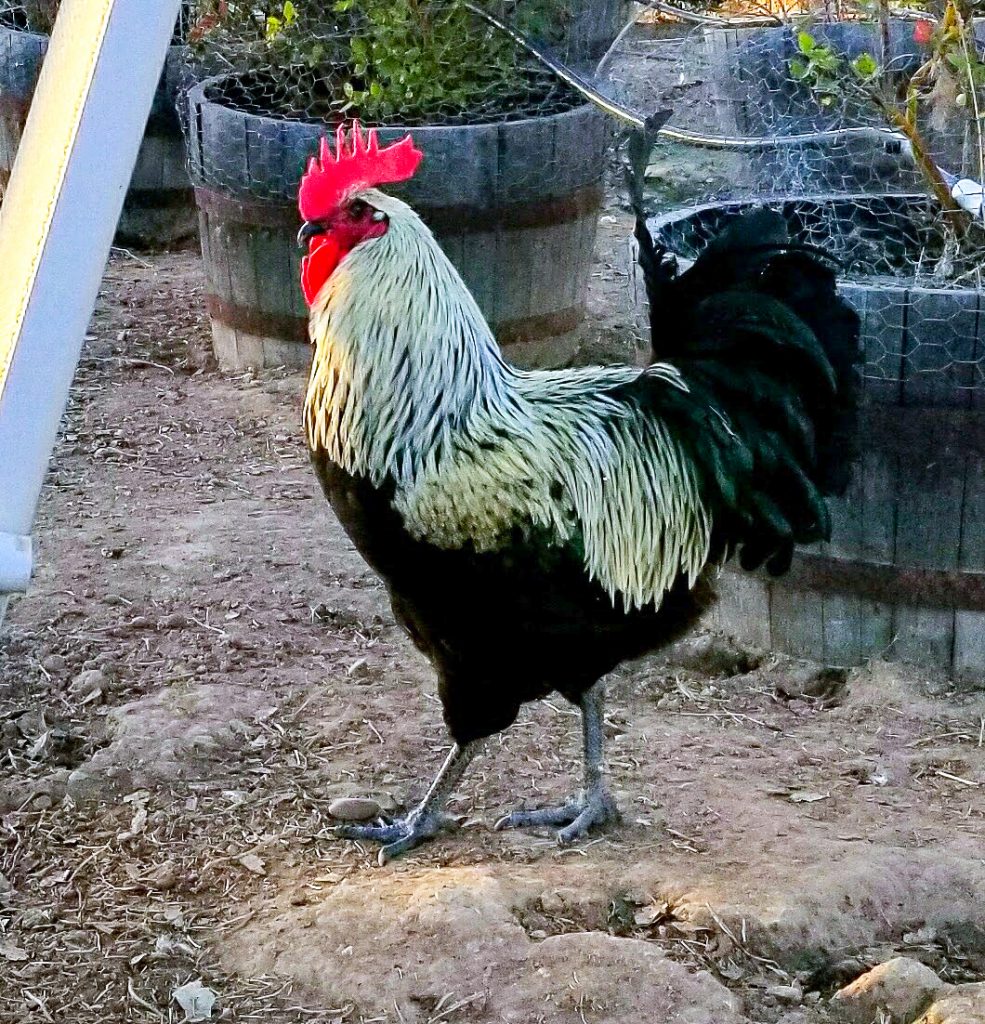
Harvesting Roosters
On February 6, 2019 by Christy LarsenLet me start at the beginning
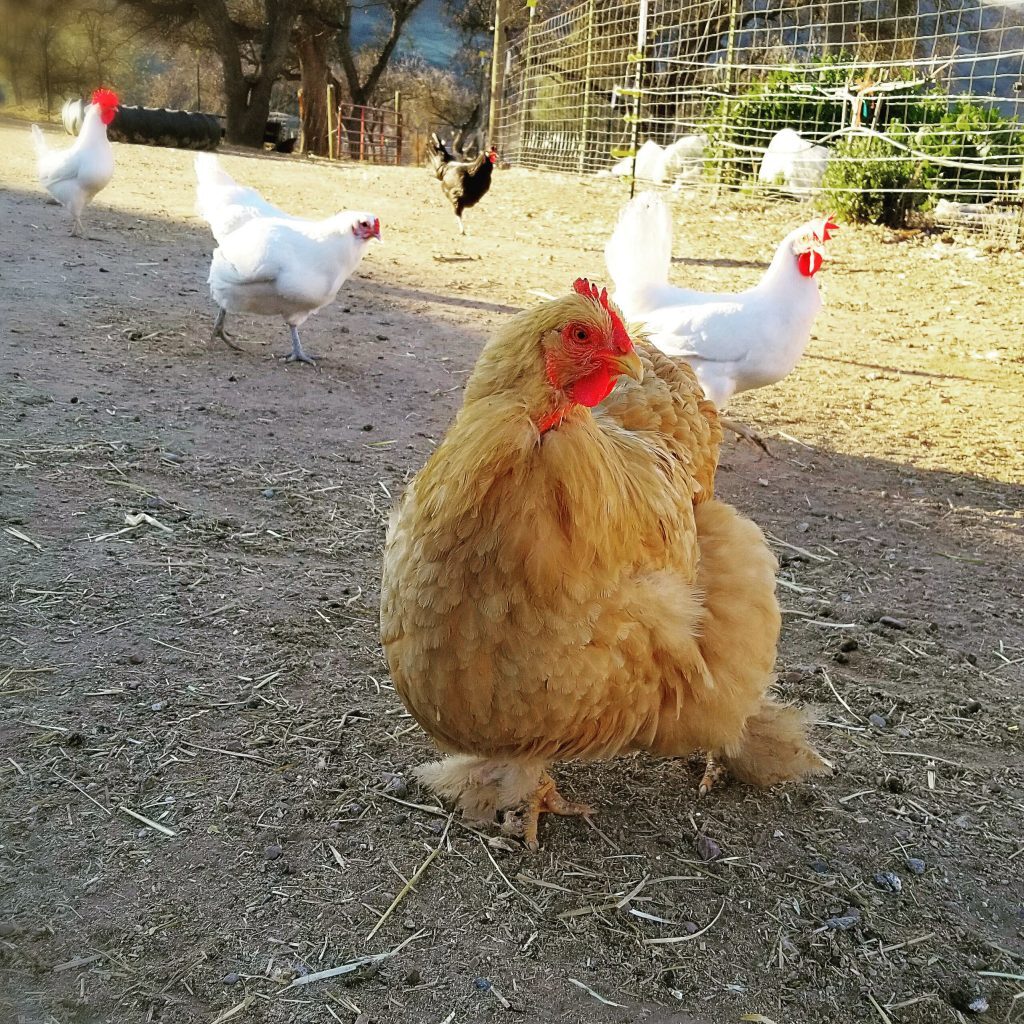
Our first set of chickens arrived via the afternoon mail and we were giddy upon their arrival. We did all of the things one does with new chicks, including daily health check and brooder cleanings. Fast forward several months and we moved them to their new coops. We had placed several moderately sized coops throughout our property and built a larger barn style coop for the bulk of the birds. We named many of our favorites, and moved to singularly naming a breed {our barred rocks for example were all named roseanne}, when we realized that we were using up “all the good names”, and we would soon have sheep, goats, dogs and pigs to name. I fussed over them and essentially took role-call each sundown.
We had placed coops throughout our property, including a large barn with a automatic door. We were obsessed with doing everything right. Making sure every chicken got back into a coop in the evening., double-triple checking everything was perfect. We also monitored broody hens {broody hens are those that will sit on eggs in the hope of bringing chicks into the world}, to make sure they didn’t hatch out any chicks.
That was how we started.
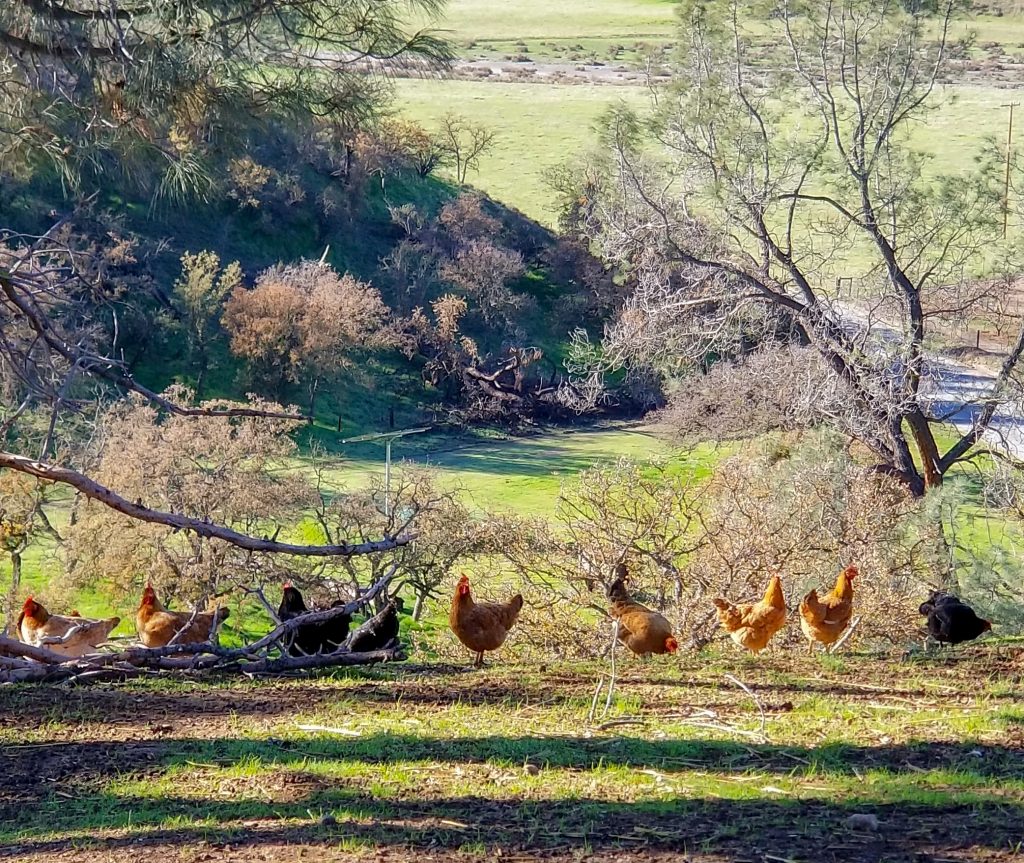
Fast-forward to today.
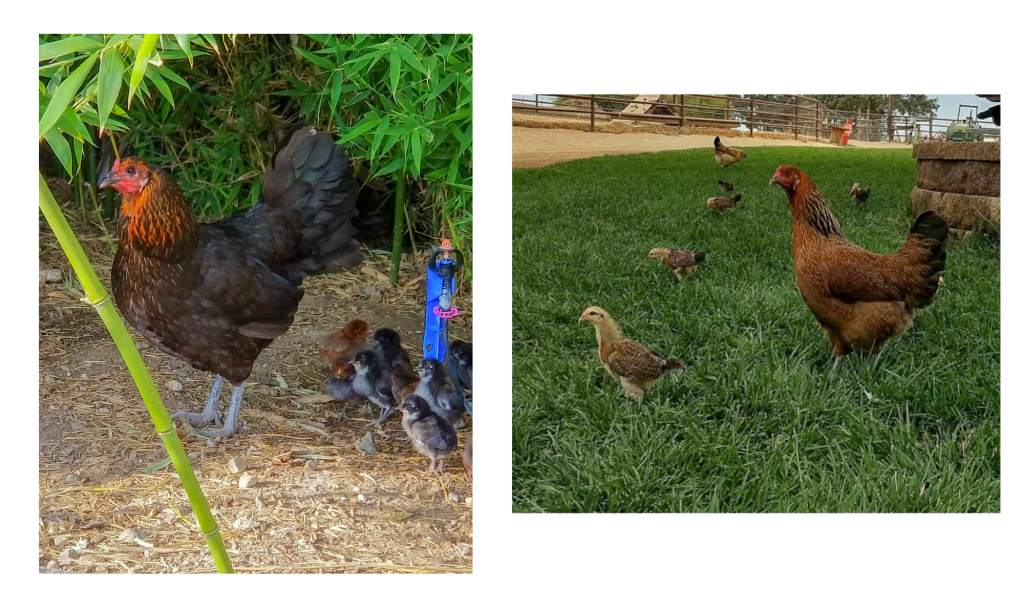
These chickens can fly.; not launch and fly away, fly, but fly to the top of fence lines, barn roofs, or to the top of a car.
And they do.
It didn’t take long for them to abandon the coops and scatter themselves throughout the property finding interesting places to roost overnight; most notably, in the trees.
These same chickens have access to 60 acres and countless places to be broody and hide clutches of eggs.
And they do.
Just as the weather starts to warm, I notice chickens disappearing for months at a time only to reappear with a large brood of their own. We welcome this, it is a great way to support natural selection. It transfers the daily routine of cleaning and feeding from us to them. It ensures our flock will continue to thrive without us having to purchase new stock from a breeder each year. It is a good thing, with one small challenge; for every female chick, there is inevitably a male. Unfortunately, a 1:1 ratio of male to female is not ideal for our flock.

We like roosters, they are not a problem, unless we have too many.
It’s not the crowing; most people think its the crowing. Even though crowing actually happens all day, and all night {not just at dawn}, it is part and parcel of the music of farm life. Our primary issue is that roosters are rough on the hens. They have their salient points like being fiercely protective, and generous with food (allowing the hens to eat first before taking their share). It is remarkable, but they also constantly grab the chickens by the feathers on the nape of the neck, to mount them; it is rough on the hens.
As a way to control the number of roosters, once (sometimes twice) a year, gather as many roosters as possible and close them in one of our abandoned coops for a day or two. When chickens roost in
On harvest day, the first thing I do is make sure we release any of our favorite roosters.
Yes, we have favorites; Maurice Chevalier for
Roosters are not all the same; we have some that are purebred of special breeds, we have some that are incredibly beautiful,
Without going into graphic detail, the process is very quick. We spend more time in preparation for the event than time harvesting. Sterilizing everything, sharpening knives, and setting up the equipment can take hours, but it is vitally important.
We harvested 20 roosters and they ranged in weight from 4-7lbs. We pluck them, dress them, clean them, and bag them for the freezer. From start to finish, it took us about 4 hours.
The larger roosters will be used for coq au vin, and the smalls are best used for stock.
The gizzards were fried for lunch, the livers will go into pate, and I cleaned the hearts for use in risotto and yakitori. Stay tuned for those recipes.
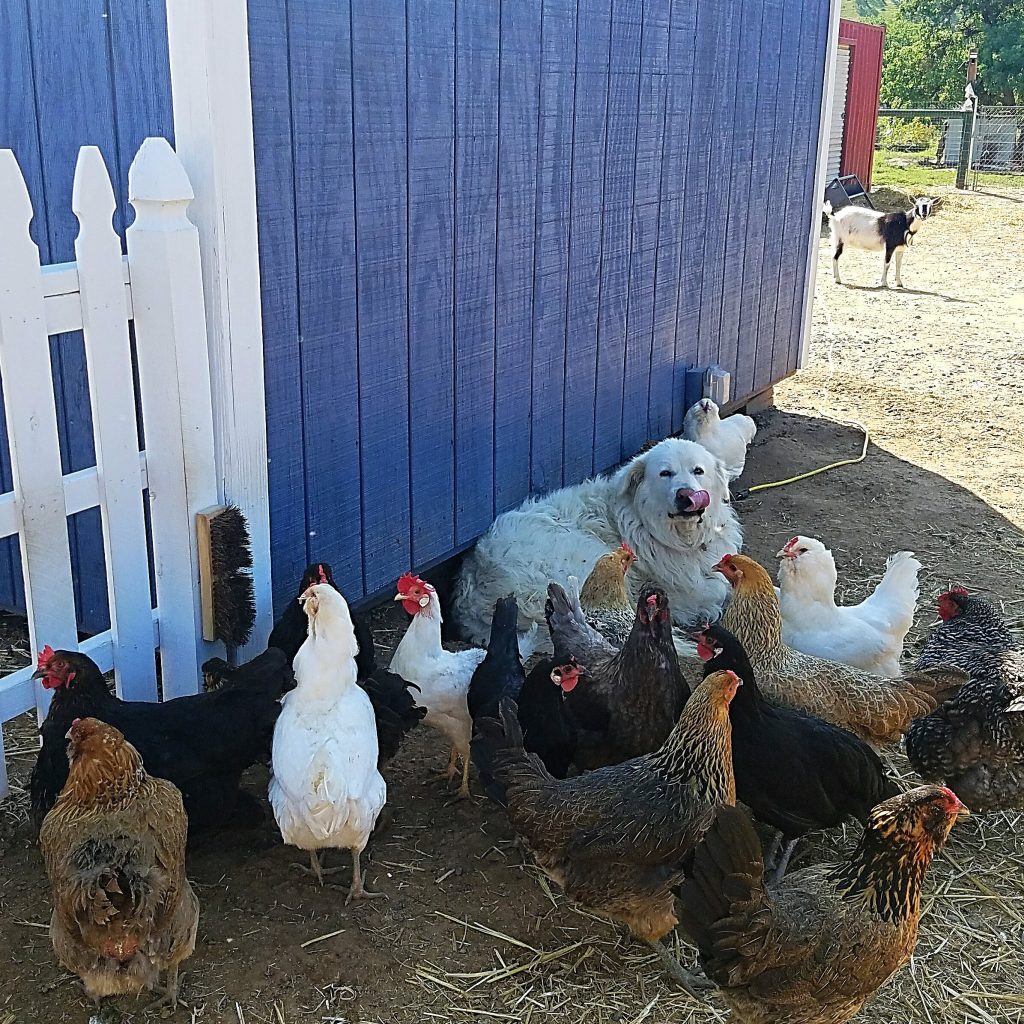
I am often asked about hens for meat, and if we raise them. The answer is yes we have, yes we will again, but we won’t raise chickens that are bred for meat. I will do a post on that soon as I have a lot of opinions about it.